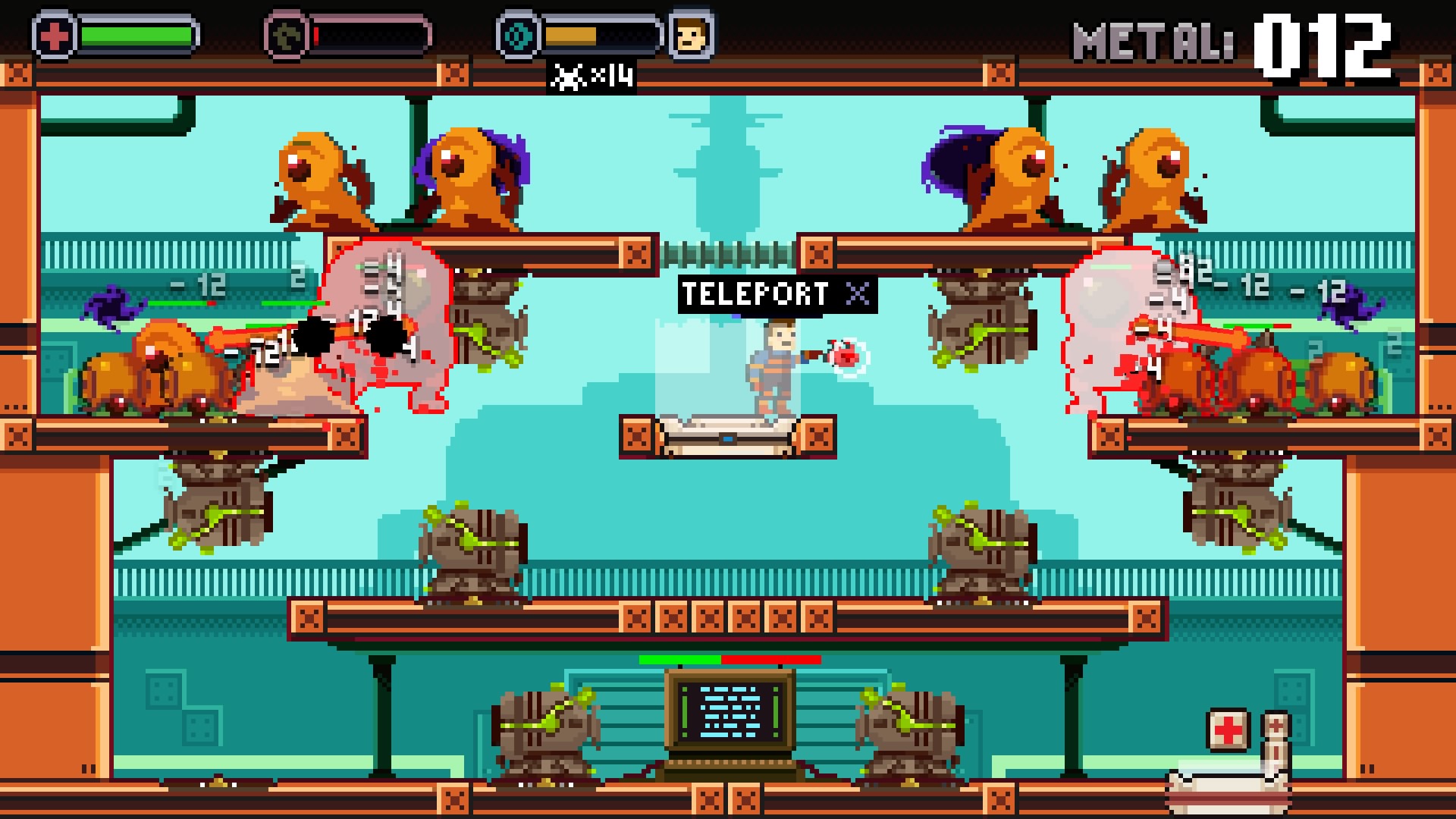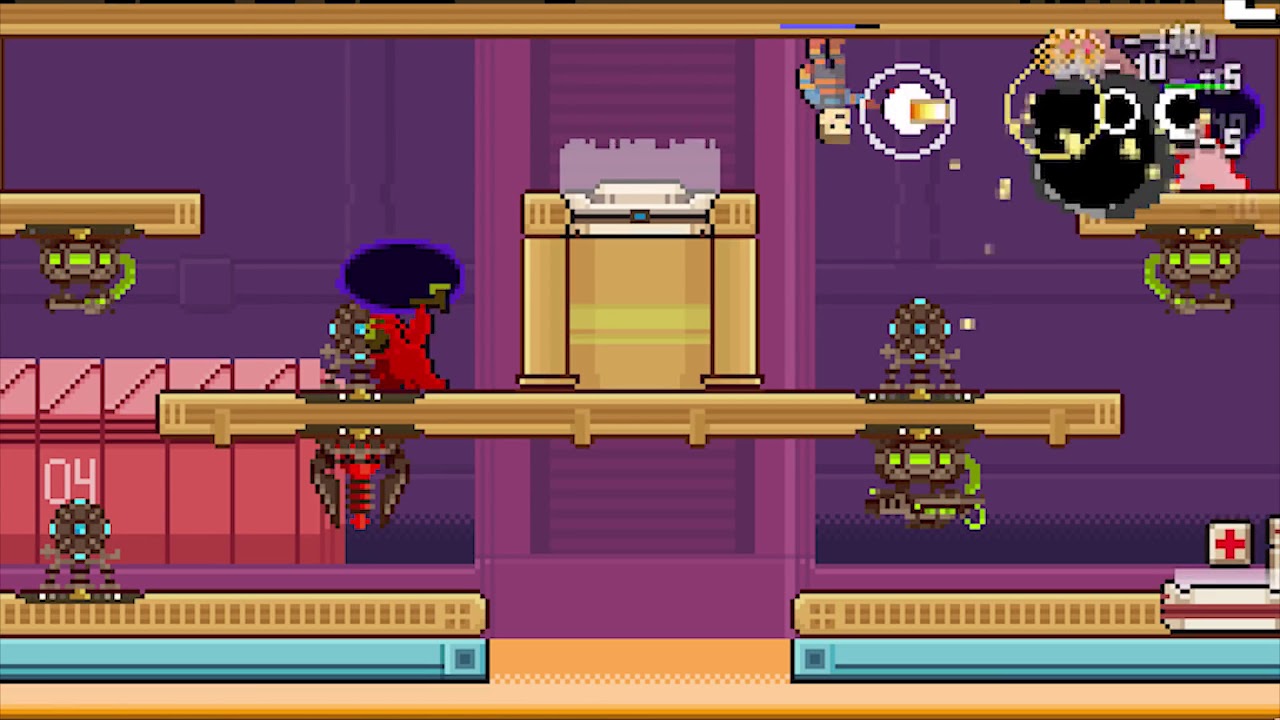Search
[{{{type}}}] {{{reason}}}
{{/data.error.root_cause}}{{{_source.title}}} {{#_source.showPrice}} {{{_source.displayPrice}}} {{/_source.showPrice}}
{{#_source.showLink}} {{/_source.showLink}} {{#_source.showDate}}{{{_source.displayDate}}}
{{/_source.showDate}}{{{_source.description}}}
{{#_source.additionalInfo}}{{#_source.additionalFields}} {{#title}} {{{label}}}: {{{title}}} {{/title}} {{/_source.additionalFields}}
{{/_source.additionalInfo}}- Details
- Category: Switch
- By Sam George
- Hits: 1707
Spacejacked (Switch)

Spacejacked
Developed by: Rotten Mage
Published by: Ratalaika Games
Release date: June 12, 2020 (Switch, Xbox One); February 26, 2016 (PC)
Available on: Nintendo Switch, PlayStation 4, PlayStation Vita, Xbox One, Windows, macOS, Linux
Genre: 2D Tower Defense
Number of players: Single player
ESRB Rating: E10+ for Fantasy Violence, Language, and Alcohol Reference
Price: $9.99
Thank you, Ratalaika Games, for sending us a review key!
Spacejacked is in good company as a blended tower defense game. Starring a technician in a two-dimensional ship, this game is a decent and perhaps unique member of the tower defense family. What it may not be is the most engaging entry. Spacejacked, intentionally or not, encourages a frenetic yet rote playstyle. I had a very hard time making progress until I found a viable layout for my defense towers; strategic difficulty plummeted after that point. A variety of enemies and a complete layout change of the defended area help the game hold attention, however. It took perhaps five to six hours to beat, and it felt varied throughout. But, again, during those hours I did not feel like I was having much fun. I was going through planned and sometimes frustrating motions.
The player controls Dave, a technician on a ship that, to the best of my recollection, has no name. Most of the crew is abducted, and Dave must protect the ship from waves of alien invaders while his shipmates are rescued. Assisting him are a pistol and three types of turrets which can be built at fixed points. The turret types are a blaster, a slow and damaging laser, and a field that slows enemies as they pass. The turrets are much more important than the pistol with its high cooldown; the game makes this clear in its first challenge mode mission, which takes Dave’s pistol away completely. The game can nearly be completed perfectly with no pistol use at all.

Strong Points: Solid controls and clear user interface; decent enemy variety; easy to play in short or long bursts; good gameplay mix-up halfway through the campaign
Weak Points: Limited build materials and small margin for error limit freedom to experiment with different strategies; little guidance on viable playstyles outside of trial-and-error
Moral Warnings: Aliens are killed by the player; humans are abducted and killed by aliens
The enemies are mostly slime-like aliens that crawl or jump along the wall and attack a computer in each of the ship’s rooms. These rooms, connected by teleporters, have slots for about five to ten turrets each. The game makes it seem like the player will need to defend multiple rooms at once. In practice, this is rarely true. Dave lacks the building material to fully defend each room. My usual technique was to spend all of my money to defend one room, and in the few seconds between the end of a wave in that room and the start of a wave elsewhere, I tore all the turrets down to rebuild them elsewhere. If there are aliens in multiple rooms at once, a few slowing turrets help immensely. Killing enemies accumulates money over time, so the desperation is lessened as the campaign goes on. I do not know whether or not the designers intended me to play the game this way; what I do know is that the game is rather repetitive when doing so and quite difficult when not. On the one hand, I could be blamed for using a strategy I wasn’t enjoying. On the other hand, the game didn’t encourage or require me to do otherwise.
If any room's computer is destroyed, the game is over. Aliens do damage quickly. Some are slow and sturdy; others are fast and unpredictable. They are unpredictable, that is, when first playing a level; enemies appear and follow the same path in a given level the same way every time. There were alien slugs, clams, snails, exploding jellyfish, humanoids, and more by the end of the game. I was impressed at the variety, though they tended to be dealt with in the exact same way: slow them enough for the gun turrets to do their work. Spacejacked also introduces variety by changing the environment part way through the campaign, including a new version of each of the three turrets. Between levels, Dave’s pistol of questionable importance can be upgraded, and a brief side-scrolling shooter level is available to get more construction resources. It’s a well-structured loop of activity, going from preparation to defense and back to preparation again. The repetitive defense gameplay is the weakest component.

Higher is better
(10/10 is perfect)
Game Score - 72%
Gameplay - 13/20
Graphics - 6/10
Sound - 7/10
Stability - 5/5
Controls - 5/5
Morality Score - 89%
Violence - 6.5/10
Language - 10/10
Sexual Content - 10/10
Occult/Supernatural - 10/10
Cultural/Moral/Ethical - 8/10
Spacejack’s challenge levels, much like the main story, play more like puzzles than action stages. With fixed resources and various limiters, the challenge levels assume that there is at least one correct way to set up turrets so that the aliens are defeated with no damage to the ship’s computer. By isolating the tower defense from the other little gameplay systems in the story, challenge mode focused on what I found to be the least fun aspect of playing Spacejacked.
The game’s presentation is functional, if not attractive. Characters animate in fun little dances when rescued, and certain aliens are interesting to watch in motion. Otherwise, the art feels crude. The music and sound effects are good enough without drawing attention to themselves. The presentation of Spacejacked really shines in conveying information to the player. It is always easy to tell which rooms need attention and where every important entity is within the current room. Menus are clear, controls are good, and Dave moves quickly. He doesn’t jump; instead, gravity is flipped to move up and down, turning the technician’s sprite upside down and back as it flies from platform to platform. Not much is made of this mechanic; I think its main job is to let the player move quickly without needing to time jumps carefully. To that end, the gravity flipping works well.
Spacejacked exceeded expectations in some areas and felt wanting in others. I wish it had forced more gameplay variety, but what is here works. The most prominent moral concern is the cartoon violence surrounding aliens and death on a spaceship. A character drinks, and there is some mild language. I’m not sure I recommend Spacejacked, but I don’t regret my time with it, either.








